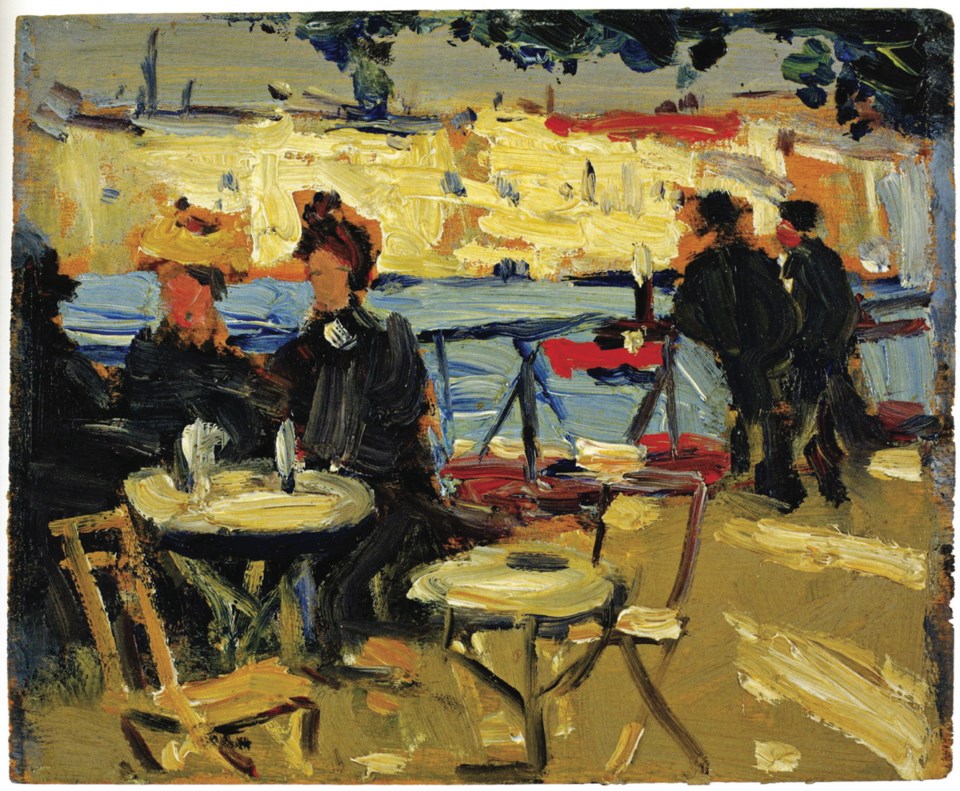Among artists and art historians, James Wilson Morrice (1865-1924) is one of Canada’s most highly regarded painters, yet his name and his work are not otherwise familiar.
In an impressive volume recently published by the National Gallery of Canada, the collector A.K. Prakash puts it this way: “Morrice is the least understood, if not the most misunderstood artist in the country. And that is partly the fault of the institutions that have obsessed themselves with the repetitive search and research on a number of other contemporaries — be they the Group of Seven or the Qubec-based Impressionists — who themselves looked up to Morrice.”
The book has been published on the occasion of an exhibition of Prakash’s gift to the nation of almost 50 paintings by Morrice, a choice selection made over the past 30 years by this dedicated collector. This gift joins a collection of 89 Morrice paintings given to the National Gallery in 1989 by Toronto art dealer Blair Laing.
Both collections include canvases of the usual size, but it might come as a surprise to find that the most cherished of Morrice’s works are little painted panels just about the size of my hand — 12.5 by 15.5 centimetres, or five by six inches.
These little panels somehow convey the art of Morrice, “his mastery, his supreme command of tonal separation and of what the retina experiences in the moment,” according to curator Katerina Atanassova. In an interview, Prakash noted Morrice’s “ability and determination to filter the unnecessary and to emphasize the necessary.”
Little is said about Morrice, the man. He was the child of a wealthy Montreal family. After taking a law degree, he decamped to Paris. He studied art there briefly, and for the rest of his life pursued his interest in painting. From Paris he went to Venice, to Brittany, to North Africa and to Cuba, with stops in Montreal now and then.
Morrice was a flaneur, a person who walks about the city and enjoys the spectacle of contemporary life. He often painted people in cafés. In an earlier book, Charles Hill put it well: “These isolated, watching people are Morrice himself, the outsider, the painter who cannot but see the world through his own personality — a world of visual pleasure bathed in a sensual glow and, on occasion, tinged with a sweet and tender melancholy.”
Morrice is best remembered for the tiny wooden panels painted on the spot with oils. Muriel Ciolkowska in 1925 reported that his entire kit “fit like a cigar case into one of the pockets of his dapper tweed suit, and which held his panels, his brushes and his made-out palette.” She described the afternoons he spent “on a surface hardly bigger than a medium-sized envelope. He would look long at his subject, mix his tone, look again, then dab on a tiny morsel of colour, lay down his brushes, take a puff of smoke and so on between every minute touch; for the severest precision in the sketch — precision of form and tone — was the secret of that lovely looseness and laxness in arrangement.”
The charm of Morrice’s personality and the quality of his work earned him a place in several Parisian art societies, where he exhibited regularly. Among those who enjoyed his companionship were Roger Fry, Clive Bell and Vanessa Bell, Aleister Crowley, Charles Conder, Joseph Pennell, Maurice Cullen, William Brymner, Edmund Morris, John Lyman, William Glackens, Robert Henri, John Sloan — and Henri Matisse.
Hilary Spurling, Matisse’s biographer, locates the two artists spending time together in Tangier in the winter of 1912-13 during Matisse’s second sojourn there. Charles Camoin was with them and “the three painters formed a companionable trio, painting the same motifs, comparing and contrasting canvases, discussing critical theory and the current thirst for innovation.”
Morrice was not Matisse, but in his time, Morrice’s paintings were purchased for the French national collection, and by the Tate Gallery and the Musée de Lyons. His credentials are impeccable, but really he is unknown except in parts of Canada. The authors of the current volume try to make a case for Morrice as an international figure, but there are no grand works in this show. The larger canvases belong to the Montreal Museum of Fine Art.
The team of authors has contributed exhaustive essays, but these little pictures essentially speak for themselves. With his passion for privacy and solitude, Morrice doesn’t offer much to write about — he never married, he wasn’t a homosexual, he probably liked a drink but wasn’t an alcoholic. He didn’t need to work for a wage nor make a living from his painting. There is no mention of his money or his mistress, Lea Cadoret. This book is all about the pictures.
Contemporary colour reproductions are very good, and make modern picture books a treat. All the pictures of the Prakash collection are here reproduced in colour, most close to actual size, with plenty of supplementary images. It is a pleasure to pore over this collection of tiny masterpieces, which were, until now, all but unknown.
These little paintings can give inspiration to anyone who has ever sat at a café with a sketchbook, or tried to take the measure of the sea with a panel and a bit of paint.
The exhibition of the A.K. Prakash collection of Morrice paintings is on at the National Gallery of Canada in Ottawa and will be seen in Fredericton, N.B., Edmonton and Joliette, Que.
Morrice: The A.K. Prakash Collection in Trust to the Nation, by Katerina Atanassova, published by the National Gallery of Canada, Ottawa, and Figure 1 Publishing, Vancouver, 2017. 240 pages.
